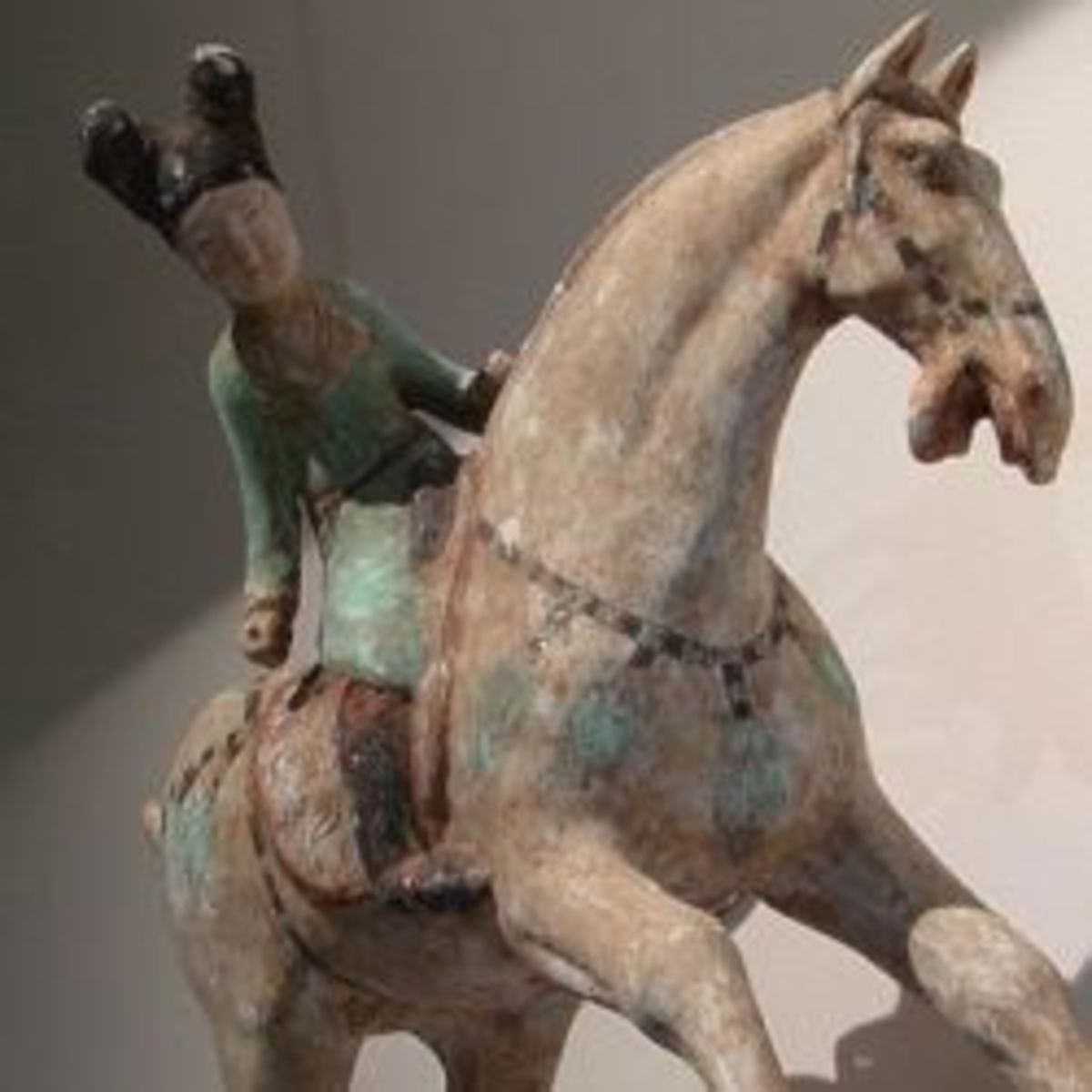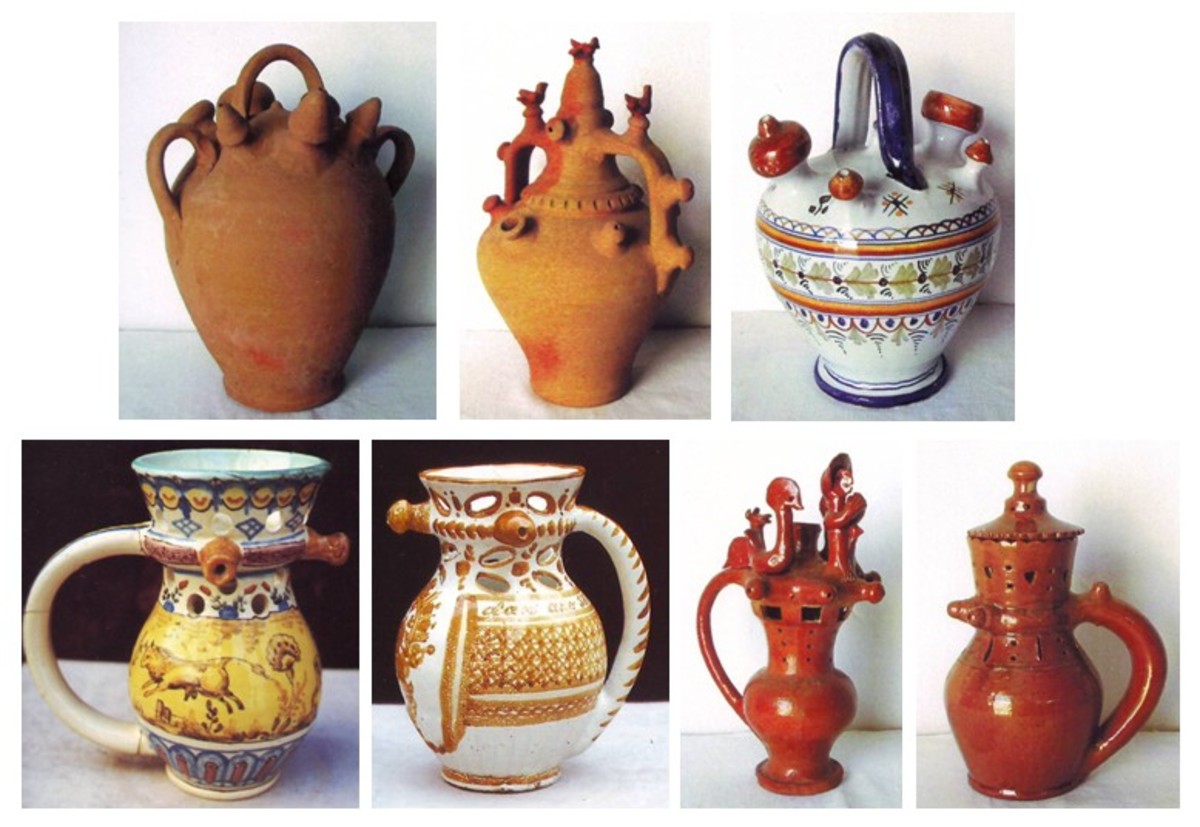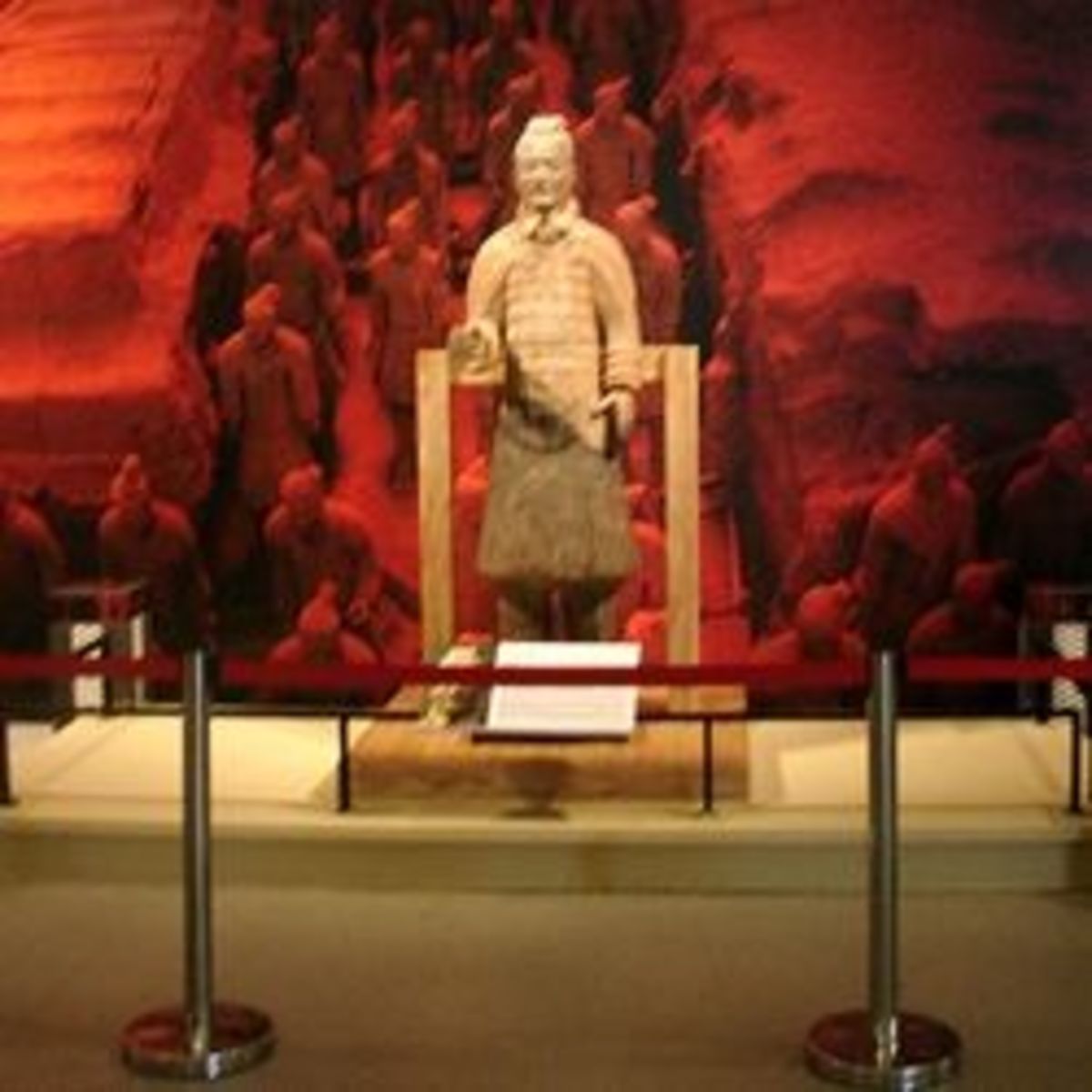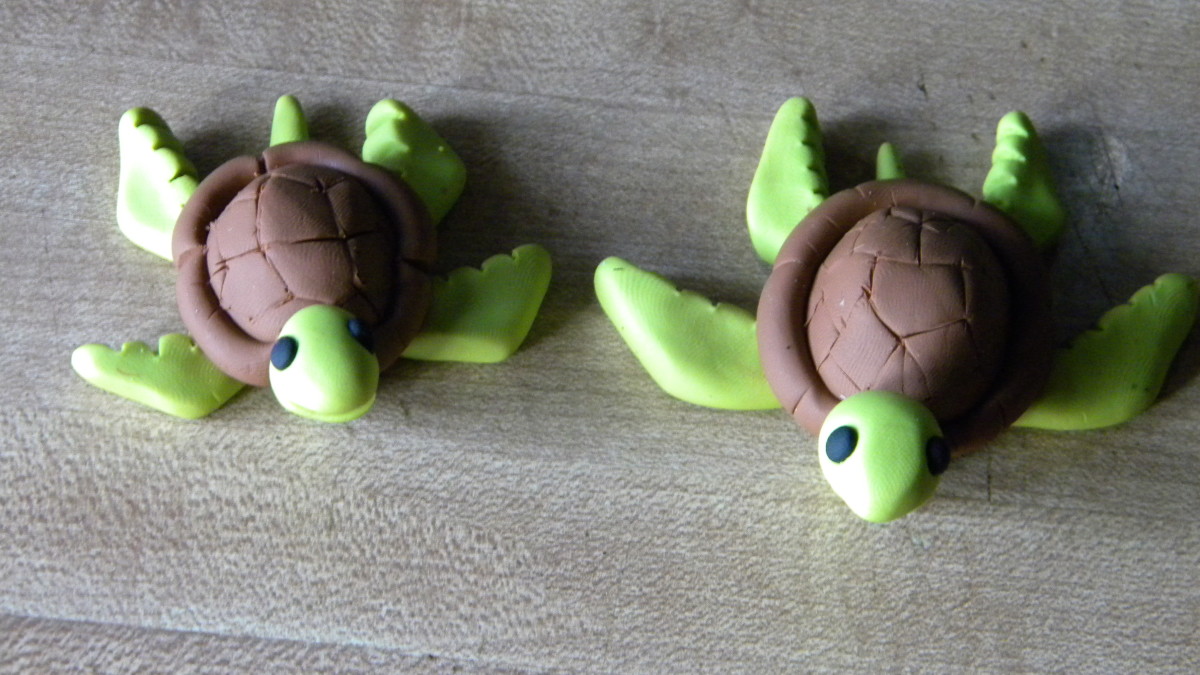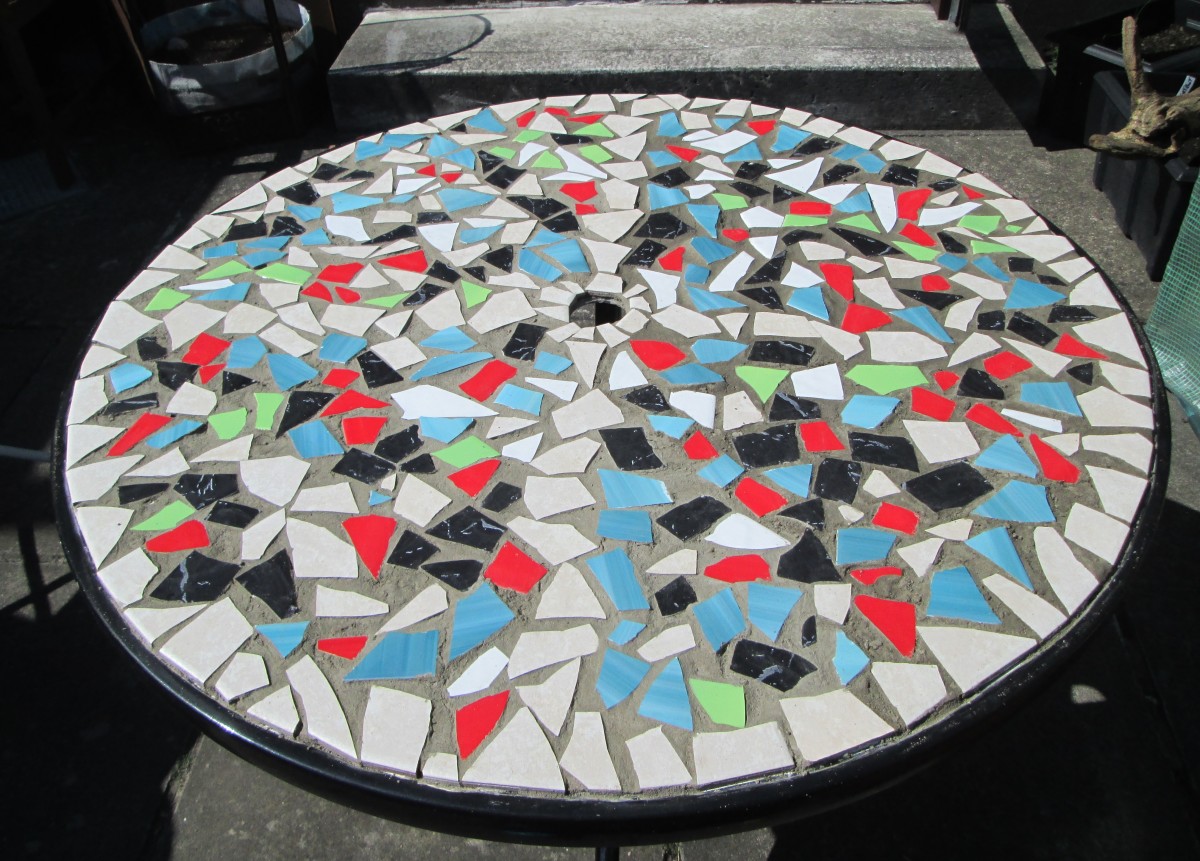Shanghai Museum: A Glimpse of Ceramics Products Through the Centuries
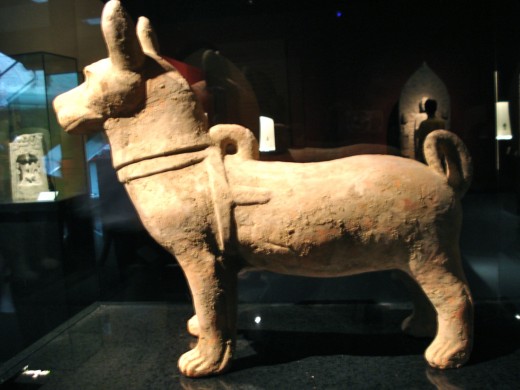
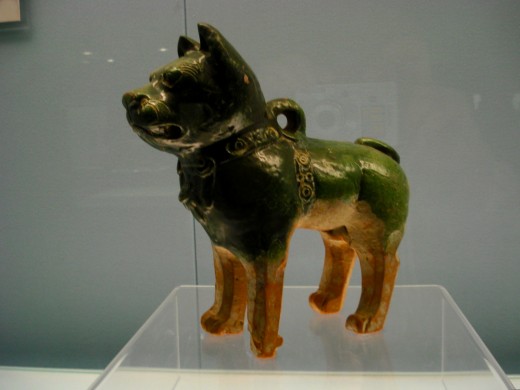
Dogs
As I explained in my first hub about the ceramics in the Shanghai Museum, I am not an authority on the subject, I just appreciate the beauty of the products. Because of this, I have arranged the headings according to some of the ceramic creations that I photographed on my visit.
The first one I have chosen is Dogs, best friend of the ancient Chinese, as well as ours today. The first one is most likely older as it appears to be made of pottery and is a good colour. If I am correct, it has survived amazingly well. I like the strong portrayal in the stance of the animal and the curly tail that is a feature of many Chinese dogs today.
The second dog has been glazed in a green that is typical of the Qing Dynasty; his collar is more elaborate and his muzzle is bared to show his teeth. Perhaps he is intended to be a guard dog in the afterlife.
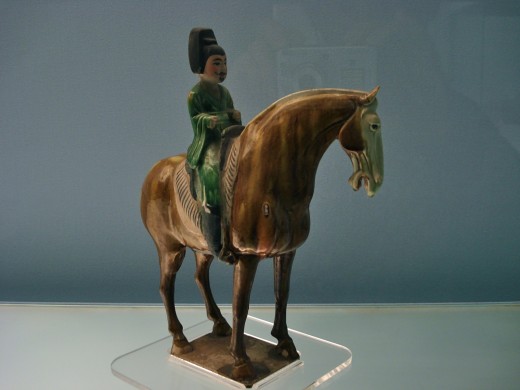
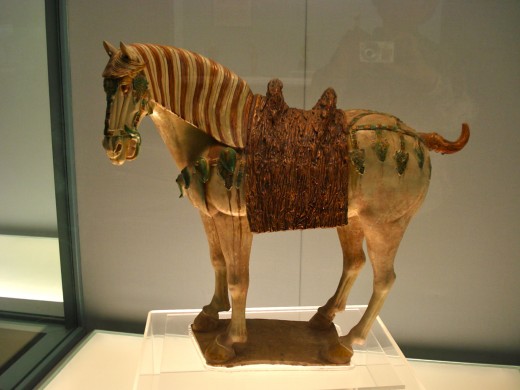
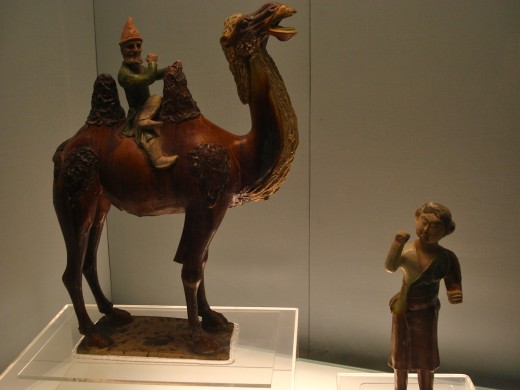
Horses and Camels
Horses and camels have been used as transport for centuries by the Chinese. They became popular as funerary objects and were included in the tombs on the Tang Dynasty as it was thought that the dead could continue enjoying earthly pleasures. The first horse is beautifully portrayed with the muscles showing and the mouth open. The saddle and decorated saddle-cloth are visible, the rider is using a type of stirrup and the position of his hands indicate that there are reins.
The second horse is especially typical of those of the Tang Dynasty (618-907 A.D.) as it is glazed with what is called san cai, three colours that were popularly utilised at the time. These three colours were green, yellow or amber, and white, which was really a cream colour. Sometimes the statues made for the tombs were formed in sections in wooden moulds; these were later joined, or luted, together using thin clay slip. Some were also carved before firing and this helped to make the finished product more individual.
This camel is also from the Tang Dynasty as can be seen from the san cai glaze. Camels were also used as funerary objects and put into tombs for use in the after-life.
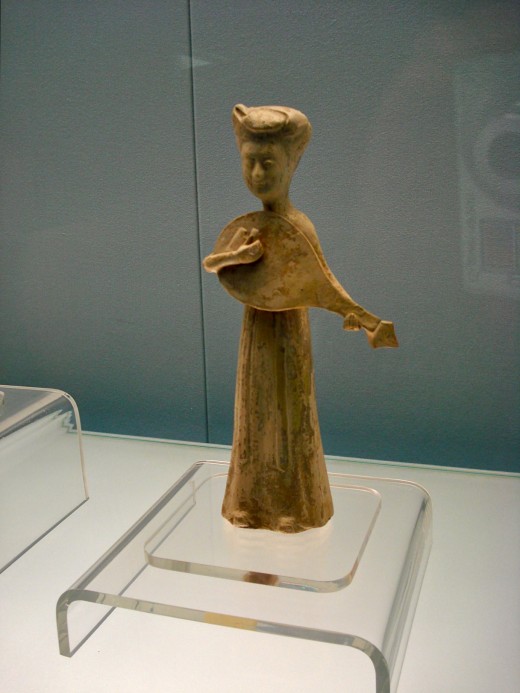
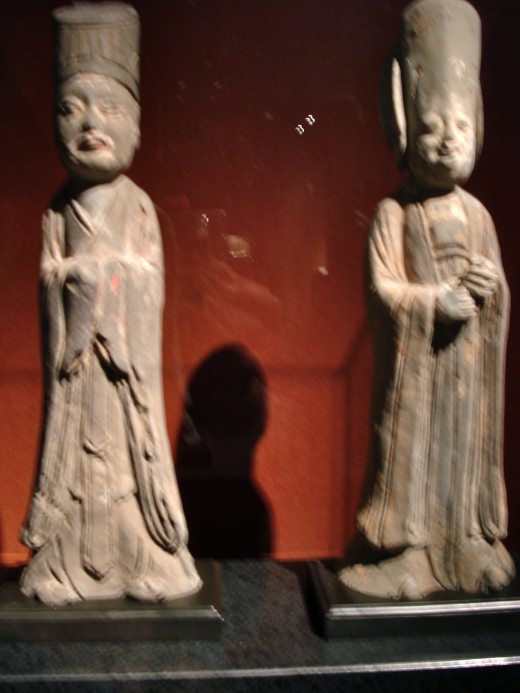
Historical Statues
I believe that Chinese statues that were only made as an ornament, were very rare in ancient China. Most were funerary items intended to go in the tomb with the person who had died, or they were statues of Buddha or other gods, perhaps worshipped by groups of Daoists or animists.
Some of the statues that I saw in the Shanghai Museum were interesting. The first one shown here includes an ancient instrument being played and the figure appears to be female. I wonder if this was a funerary item intended to amuse the person in their after life. Although the gown reaches the feet, the arm is bare, which is unusual, but practical for the performer. She also seems to be wearing some kind of headgear.
Each of the figures in the second photograph wear distinctive clothing. The tall headgear seems to denote that they were important people. It is interesting that both these characters have long, flowing sleeves to show that they are not poor and can afford to buy, or have made for them, clothing that uses an abundance of fabric. From the complacent facial expressions, we can deduce that they are peace-loving people and one could possibly be a female.
I have searched in the books in my possession and cannot find any statues that resemble these, so if any who read this can enlighten me further, I would be very happy to add the information to the hub.
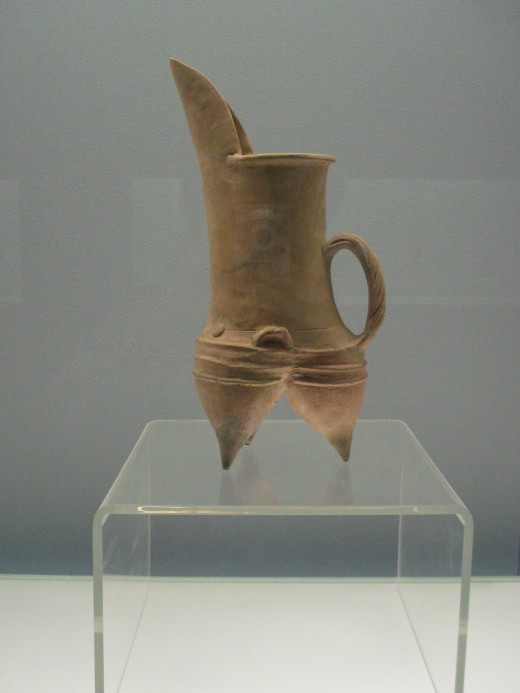
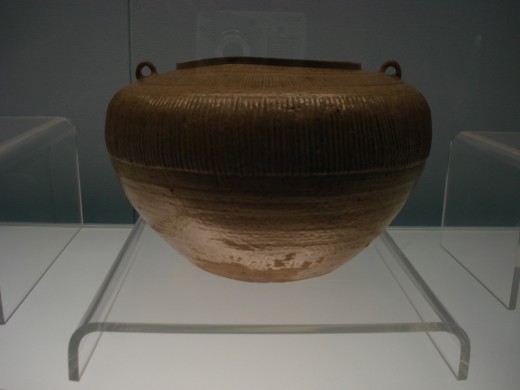
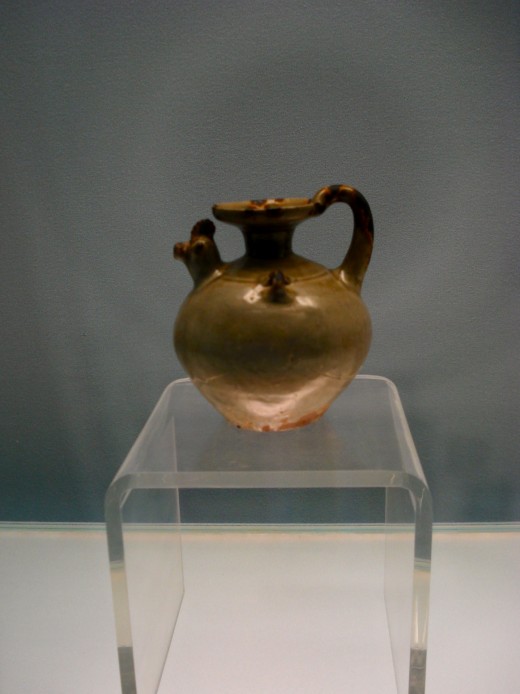
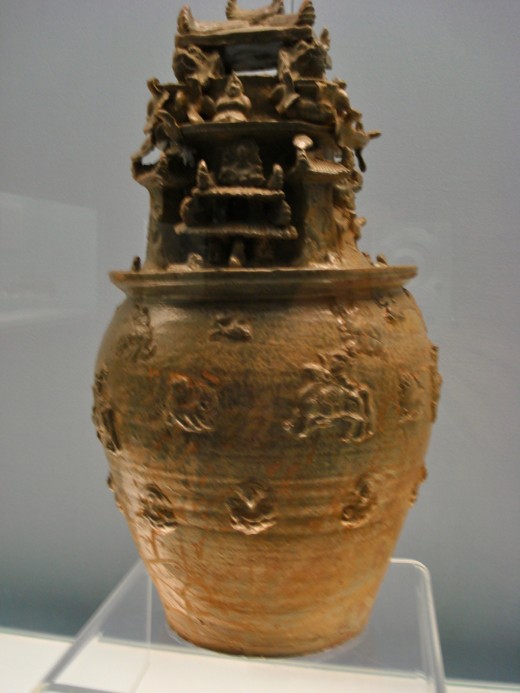
Shapes and Decorations
Ancient Pitcher
This first photograph is of a truly ancient vessel as it has been dated as coming from the Shandong Longshan culture that was way back even before the dynasties had evolved. This culture is thought to have existed as far back as 2500-2000 B.C.
I love the three legs that come to such delicate points, the ridged decorations and the twisted handle. To me, it is quite mind-blowing that a utilitarian object designed for use and yet so obviously fragile as this has survived.
The vessel is described as a 'white' pottery pitcher and it seems surprisingly modern in its design.
Bowl
The second photograph is of another, quite different, but still practical utensil that is free-standing. I imagine that this vessel was still ancient, but a little younger than the first. The decoration has been carefully designed and executed. It looks so fine and thin that it could be made from bronze or some similar metal.
In the photograph it is not easy to see the decoration but it looks as if it could be a stylised 'cloud' design, although that is usually rounded and this seems to be geometric.
The cloud design is looked on as being particularly auspicious as it represents the sky and water. It is also considered to be lucky, as it is a play on words. The characters are different, but the pronunciation is the same for both cloud and good luck.
Small Jug or Pitcher
The vessel in the third photograph is comparatively small, but the design is different again. It is quite shiny and may have been glazed with iron oxide. When as much air as possible was allowed into the kiln during firing different colours were produced. This small pitcher may have had a special use in religious ceremonies.
Fruit jar
The last item pictured is highly decorated on top. It is a funerary vessel and it is thought that it may have been used for storing fruit for use in the afterlife. The decorations on top were very interesting and the rest of the jar was also decorated. It comes from the area of Western Jin, in the Jin Dynasty period, 265-420 A.D. The figures are Buddhist.
The fruit jar is quite similar to another interesting one I saw that came from a similar era. The top of this one was decorated with a sculptured design of architectural buildings and is known as a celadon hun-ping jar. It is thought that it was used for the same purpose.
Colour and Carving
Coloured Clay Pillow
When I saw the object in this photograph in this group, I was delighted, as I was once given a Chinese pillow made of perfumed stone. This pillow is interesting as it has been made with two different coloured clays. The clays have been very carefully blended to make a pattern of lines and swirls and then another design added to the top, still made with the same coloured clays.
Carved Wine Jar
This appears to be similar in shape to the wide-mouthed Kuan Jar from the early Ming Dynasty. I like it because of the shape and the design, which is in relief. I looks as though a clay of a second colour was luted on top of the basic jar, and then the design was carved, so that the base colour shows through. The chrysanthemum is a significant flower as it represents a wish for a long, happy life and in Taoist thought it stands for simplicity.
Carved Pillow
This second pillow seems to me to be of a later period than the first pillow, as the design seems more creative and advanced. This pillow appears to have been glazed, although the intricate design of flowers and leaves has been carved as well.
Coloured and Incised Plate
In early times simple bowls were made for holding food. This elegant plate is quite large and the coloured design is very attractive. It is probable that the pattern was first incised and then the plate biscuit fired. Later the colour was applied directly to the biscuit, with the position of the glazing being limited by the incisions. The colour may have been produced by using underglazes of lead silicate enamels. An overglaze could have been added before the third and final firing. The plate may well have been made to celebrate a wedding as the mandarin duck mates for a life-time and so symbolises wedded bliss and life-time fidelity.
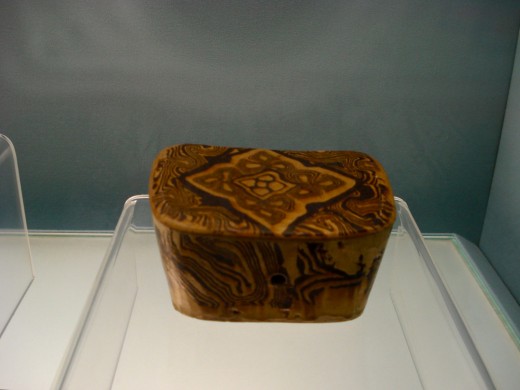
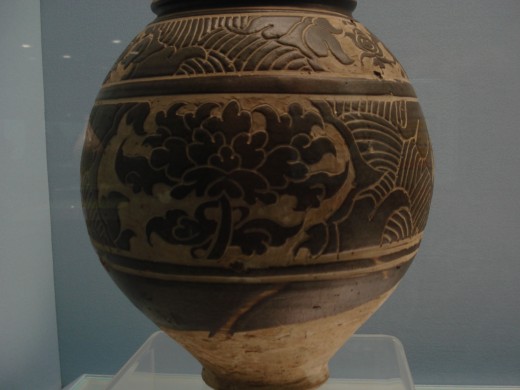
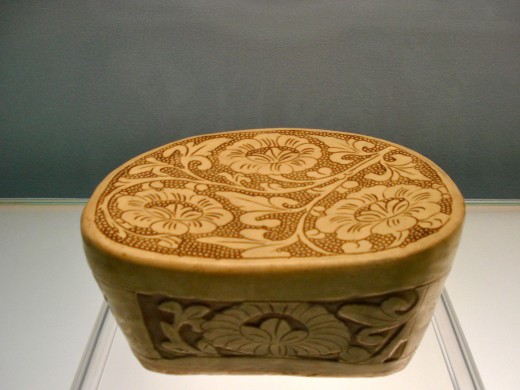
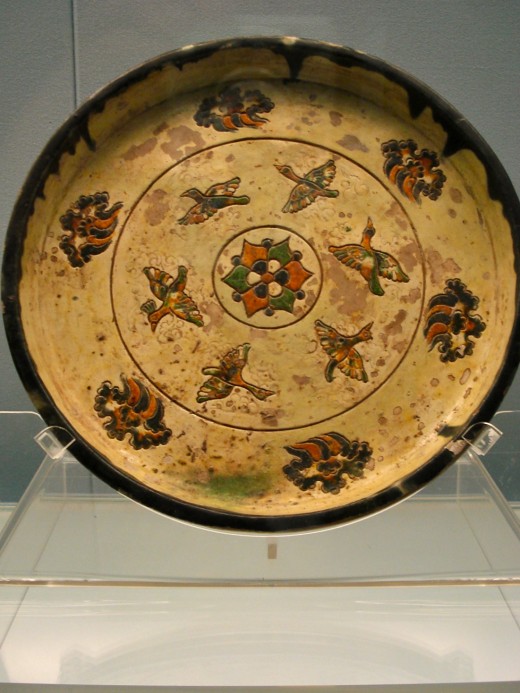
How the Ceramics are Made
- http://blossom.sb/hubpages.com/hub/Wonderful-ceramics-in-Shanghai-Museum
Shows various types of kilns and methods of production.


